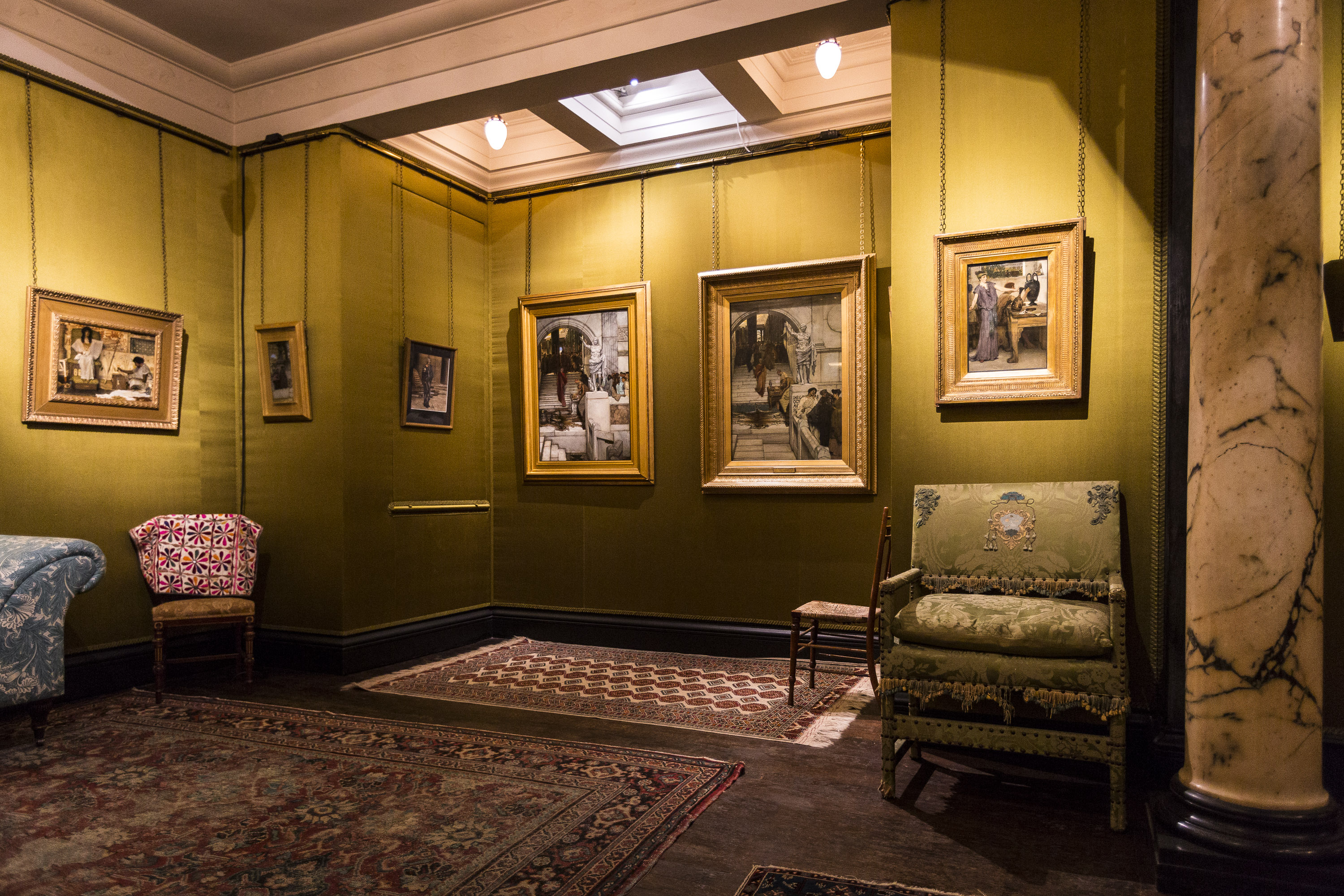Alma-Tadema: At Home in Antiquity

Leighton House Museum, Kensington, London
July 7 – October 29, 2017
At Home in Antiquity presents works by one of Victorian Britain’s most acclaimed classicizing painters, the Dutch-born Lawrence Alma-Tadema (1836-1912), in the home and studio of another—his friend and colleague Frederic, Lord Leighton (1830-1896). As a painter of antiquity, Tadema distinguished himself by depictions of the quiet, quotidian aspects of ancient life. His subjects feast, pine, and loll in meticulously researched domestic interiors or atop breathtaking Mediterranean promontories. The Leighton House is well suited to the show’s domestic emphasis, which argues that “home” was just as integral to Tadema’s working methods as it was to his painted subjects. Tadema, like Leighton, painted from purpose-built London studio-houses, which brought the lives of his whole family into intimate and fertile contact with his work. The exhibition rehabilitates his “Victorians in togas,” revealing them as the compelling personages of his wife Laura, also a painter, and his daughters, whose own artistic endeavors were nurtured by a lively familial enterprise of art-making.[1] Displaying many of Tadema’s greatest works, the show also provides views of his homes, pieces of his furniture, and paintings made by his family and friends.
The exhibition proceeds chronologically. In the first room, which once served as Leighton’s drawing room, early paintings of Merovingian scenes demonstrate the breadth of Tadema’s historical imagination and his eye for period details. Paintings in the next room mark a dramatic change of antique subject, inspired by Tadema’s Italian honeymoon of 1863. These works witness his early proficiency in rendering the costumes, architecture, and golden light of a distinctly Mediterranean antiquity, to which he would turn his crystalline vision most exuberantly for the remainder of his career. Pompeii, which Tadema toured on this trip, was a special revelation for the painter. More than any other archaeological site, Pompeii proffered an unparalleled glimpse into the homes and daily lives of the Romans and for this reason exerted a major influence over his work.

Image courtesy of Leighton House Museum and Kevin Moran Photography.
Tadema saw in Pompeian archaeology the trappings of a more authentic antiquity. This he evoked in an abundance of archaeological detail, deployed towards exquisite reconstructions of Pompeian interiors and, from the 1870s, arrayed before Mediterranean vistas suffused with light. He preferred anonymous women to historical figures, and a sensuous, feminine lassitude characterizes his oeuvre. The Roses of Heliogabalus (1888) manifests this most dramatically and is given pride of place in the Leighton House’s exhibition gallery, which displays Tadema’s later works—his largest and most ambitious—against the plain walls of a modern gallery space. The painting depicts an event recorded in the Historia Augusta (4th century AD), which pertains to the rule of Heliogabalus, Rome’s emperor from 218-222 AD. Whereas the textual source describes the appalling death-by-smothering of the emperor’s dinner guests due to an overabundance of flowers, Tadema has painted an enticing and surprisingly stately orgy, decorously concealed beneath a riot of pink and white petals.[2]

Image courtesy of Leighton House Museum and Kevin Moran Photography.
The floridity of Tadema’s paintings accounts in part for his posthumous reception as a painter of Victorian sentiment and classicizing kitsch. At Home in Antiquity prompts a sort of reappraisal. For one, its display demonstrates to visitors how profoundly his masterfully constructed settings have influenced cinematic portrayals of the antique, from the silent films of the early twentieth century to Ridley Scott’s Gladiator (2000). A whole room of the gallery is devoted to his influence on cinema, displaying his paintings side-by-side with stills from the films that they inspired. To a certain extent, Tadema also anticipated important trends in the fields of Classics and archaeology: Pompeian garden archaeology, an interest in Roman Britain, and a curiosity about ancient life beyond the “great men” of Victorian histories. His paintings still captivate for their splendid portrayals of antique life and for the glimpses they afford of a wealthy Victorian milieu who, fascinatingly, felt very much at home in antiquity.
Daniel Healey
_______________________________________________________________________
[1] “Victorians in Togas” was the title of a major exhibition of Tadema’s paintings held at the Metropolitan Museum of Art in 1973. Christopher Forbes, Victorians in Togas; paintings by Sir Lawrence Alma-Tadema from the collection of Allen Funt (New York: Metropolitan Museum of Art, 1973).
[2] Life of Elagabalus 21.4-6.